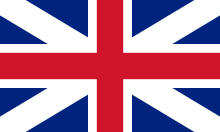Union of the Crowns
The Union of the Crowns (Scottish Gaelic: Aonadh nan Crùintean; Scots: Union o the Crouns) was the accession of James VI of Scotland to the throne of the Kingdom of England as James I. It is also the consequential unification for some purposes (such as overseas diplomacy) of the two realms under a single monarch on 24 March 1603.


In its turn, the English Parliament responded with the Alien Act 1705. This threatened to impose economic sanctions and declare Scottish subjects aliens in England, unless Scotland either repealed the Act of Security or moved to unite with England.[1] The Estates chose the latter option; the English Parliament agreed to repeal the Alien Act,[2] and new commissioners were appointed by Queen Anne I in early 1706 to negotiate the terms of a union.[3] The articles of union approved by the commissioners were presented to Anne on 23 July 1706.[4] Then it was ratified by the Scottish and English Parliaments on 16 January and 6 March 1707, respectively.[5] Under the Acts of Union, England and Scotland were united into a single kingdom called Great Britain, with one parliament, on 1 May 1707.[6]